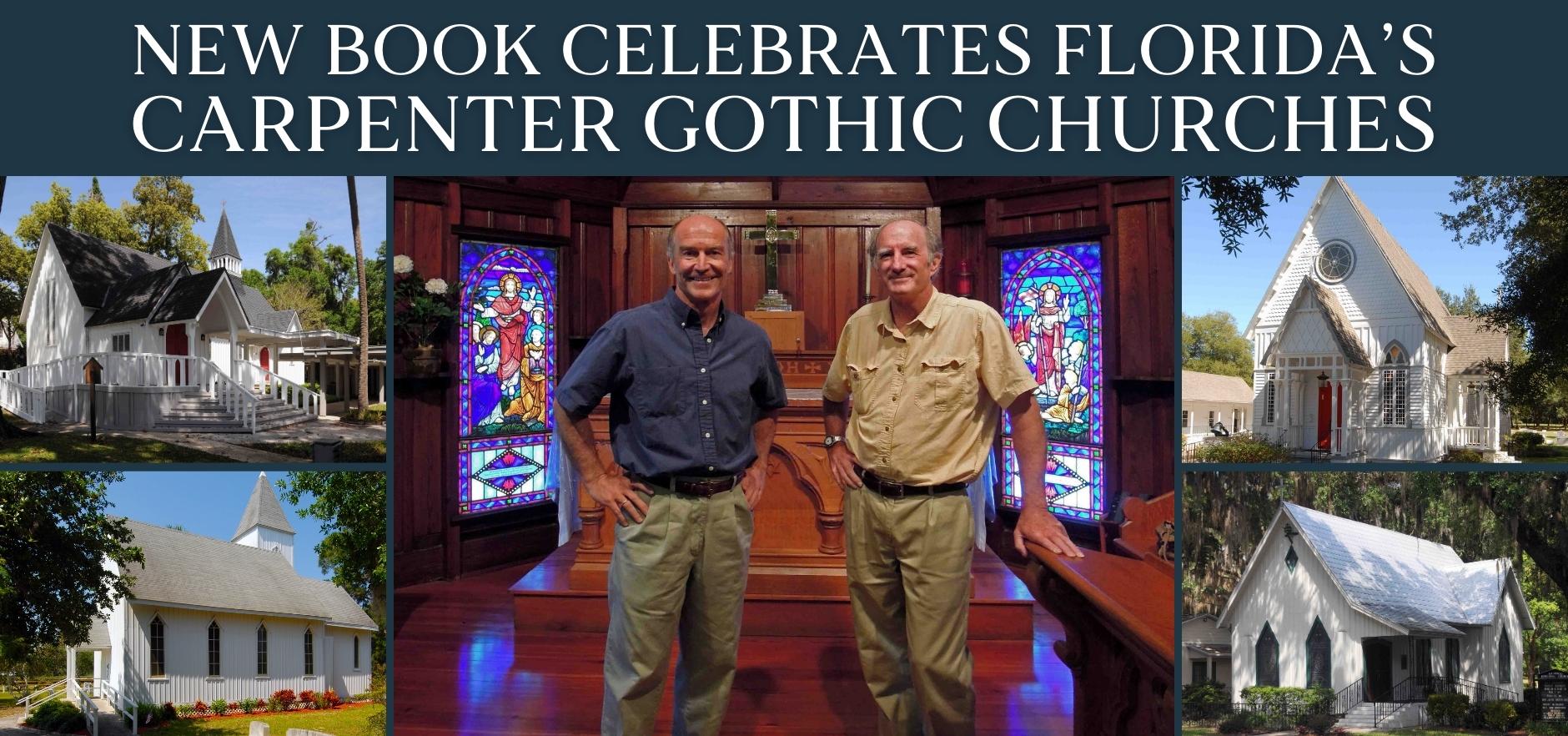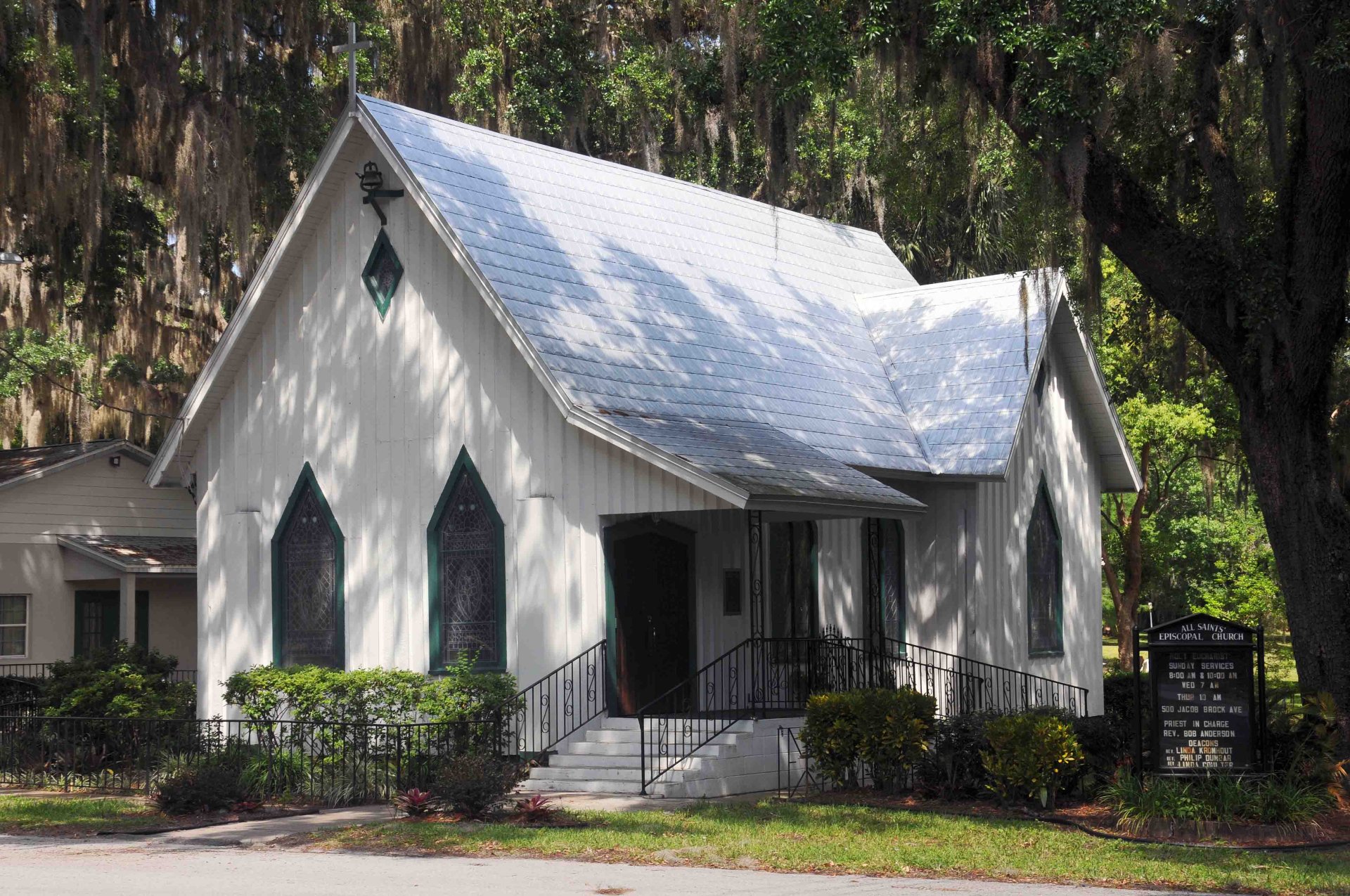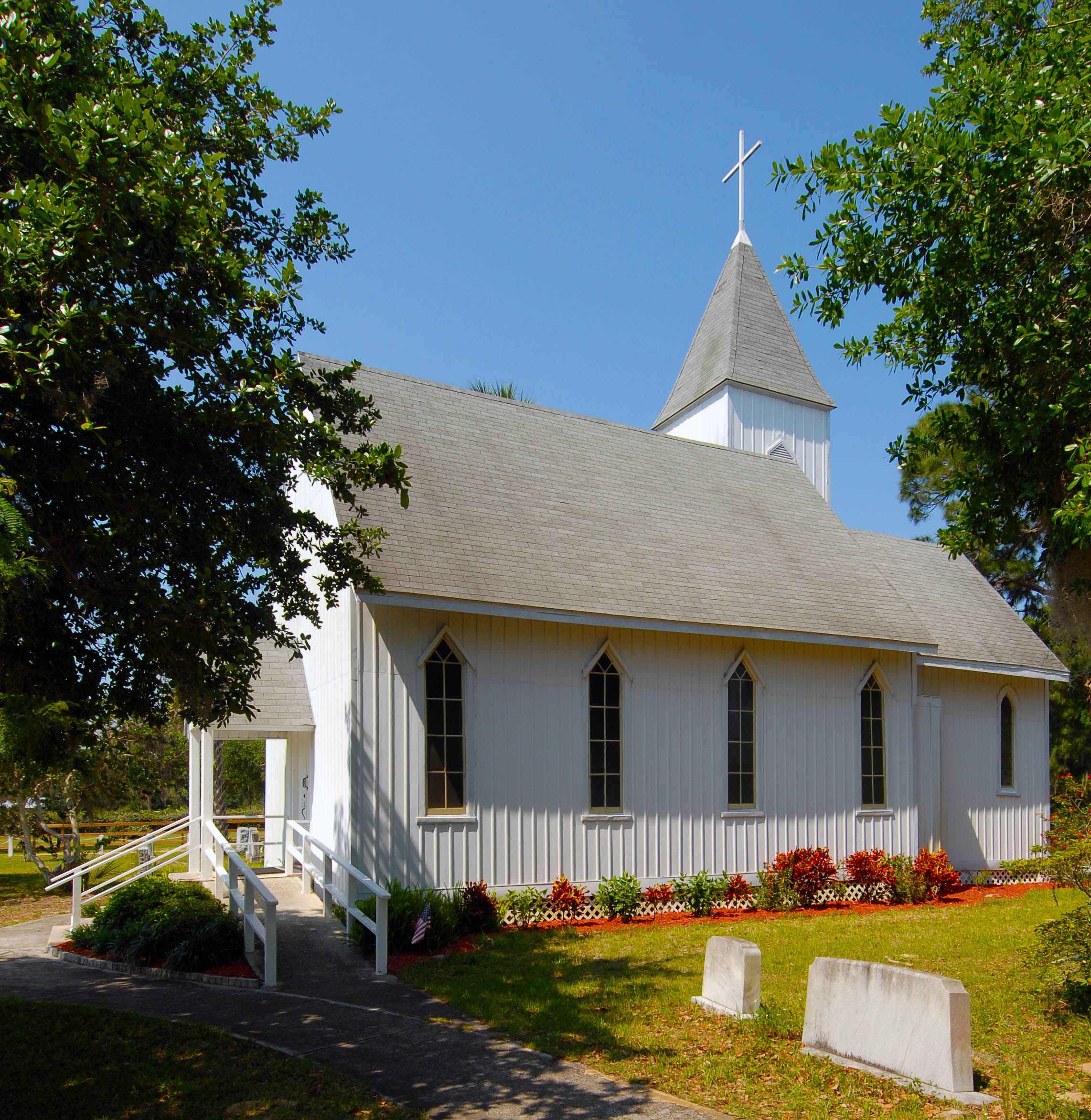Native Floridians. Cradle Episcopalians. A longtime friendship. Shared passions for architectural preservation and Florida history. A “chance” meeting in the post office. Multiple visits to churches. Years of research and writing. Thousands of photographs.
All these factors combined to yield the publication, expected to occur on or around Nov. 14, of a legacy book that highlights a topic of great interest to many Florida Episcopalians: the state’s Carpenter Gothic Episcopal churches.
“Spires in the Sun,” written by Jonathan Rich with photographs by Phil Eschbach, presents the story of the oldest surviving wood-frame Episcopal churches in Florida. The Carpenter Gothic architectural style sought to replicate on wooden structures features originally carved in more expensive stone, made possible by the abundance of both timber and skilled woodworkers in 19th-century Florida.
Breathtaking photographs line the pages, but this is far more than a coffee-table book. It captures the heart and the history of 39 churches, all of which started out in the then-statewide Diocese of Florida. “It’s the only definitive history of the old Episcopal churches of Florida in existence, and it’s never been done before,” Eschbach said.
Fifteen of these historic churches are now part of the Diocese of Central Florida: All Saints, Enterprise; Christ Church, Longwood; Christ Church, Fort Meade; Good Shepherd, Maitland; Grace, Ocala; Grace, Port Orange; Holy Apostles, Satellite Beach; Holy Spirit, Apopka; Holy Trinity, Fruitland Park; Holy Trinity, Melbourne; St. Gabriel’s, Titusville; St. James, Leesburg; St. Luke’s, Merritt Island; St. Mark’s, Haines City; and St. Mary’s, Daytona Beach.
“We have never not known about some of these churches,” said Rich, a retired attorney with a longtime interest in history, pointing out that he and Eschbach, a commercial photographer specializing in architecture and travel, were both raised in The Episcopal Church. When they ran into each other at the Winter Park Post Office in 2014, Rich had already done some writing on what he then called “a project” he first conceived in late 2006; he had even taken a few photographs of Carpenter Gothic churches. But from that point on, that project became a team effort with what he said was “never a bad moment.”
“There have been some setbacks, of course, and there have been many bright moments,” he added. “We’ve traveled and seen as many as three, four, even five churches in one day. Sometimes we could only do one church in a day, and some have been harder to get into than others. Some are no longer in the ownership of The Episcopal Church; some are now museums or have been passed on to other owners.”
The plans for the book changed as Eschbach and Rich began their collaboration. “I had originally envisioned doing only the St. John’s River churches – there are 14 of those – but we collectively came to feel that if we only did those, we would be leaving out a lot of churches,” Rich said. “We felt that the scope had to be statewide.”
The duo decided to limit the book’s content to Episcopal churches built before 1900, but they soon added another criterion that further narrowed the field: “We decided to eliminate the ones that had been substantially renovated to where they were not recognizable as they were originally built,” Rich explained.
Creating “Spires in the Sun” was by no means a fast process. “We tried to get each church in the best light,” Eschbach said of his photography. “Sometimes we got there in bad weather, so we returned some other time.” Repairs and other factors also affected accessibility of some of the churches, but he said he made sure to capture “reams” of photographs at each church.
Along with the photographs, the research and the writing both took time. “One of the things that Phil and I realized is we couldn’t boil the entire histories of these parishes down to seven or 10 pages and do them any kind of justice,” Rich said. “The most we could hope to do was to tell about the church’s beginnings.” He said he requested “everything you have” from each church about its founding, including construction details and the fundraising drive that preceded it, noting that the churches were extraordinarily helpful in providing assistance.
Eschbach and Rich regard their work as an expression of gratitude to their fathers, who introduced them to The Episcopal Church, as well as to the churches profiled within its pages. “This book is a way of thanking them for opening their doors to us, for sharing their stories with us,” Rich said. “Otherwise, we wouldn’t have been able to do it.”
Part 1 of the completed book includes a description of a typical Florida church of the Carpenter Gothic style along with a history of The Episcopal Church in Florida and biographies of the first three bishops of the Diocese of Florida, the Rt. Revs. Francis Rutledge, John Young and Edwin Weed; an explanation of relevant influences of the day; and an examination of the prominent roles of women in campaigns to build the churches. Each of the 39 chapters in Part 2 profiles one of the 19th-century Carpenter Gothic Episcopal churches in Florida, describing its construction and earliest history. Also included are interesting stories that post-date the launch of the churches, the choice of which was “largely whimsical,” Rich said.
As the project moved forward, it became clear to Eschbach and Rich that what had begun as a project and progressed to a book had become much more. Both discovered surprising family connections to the historic churches. And both experienced a profound sense of wonder as they stepped into the sacred spaces where so many men and women of faith had stood before.
“This work gave a human dimension to spirituality that frankly, I hadn’t expected,” Rich said. “Just the embodiment of faith that these people displayed in their journeys was inspiring; they lived it out in endurance and hardship. And the churches themselves stand as silent sermons, mute witnesses to the faith of centuries past.”
Despite its clear spiritual impact, Rich and Eschbach were careful to present their work through the perspective of “the outside world admiring what The Episcopal Church had done,” Rich said. “Most of it is secular; it’s an appreciation of the architecture and use of the churches as time portals through which to travel back to meet the men and the women who dreamed of them and then created them.”
At the same time, the book is “completely complimentary to the church,” he added. “There’s not a negative word about the church in there. This is a hymn to the pioneer era, the germination of the diocese, if you will.”
Currently available through the St. John’s Cathedral Bookstore and Gift Shop in Jacksonville, “Spires in the Sun” has garnered endorsements from many, including leadership in the Diocese of Florida: the Rt. Rev. Samuel J. Howard, bishop; the Rev. Canon Dr. H. Douglas Dupree, canon theologian and rector, The Bishop’s Institute for Ministry and Leadership; and the Rev. Canon Dr. J. Allison DeFoor, consulting canon.
Multiple author talks have been set up to support its launch, including one on Saturday, Nov. 4, at 3:30 p.m. at the Winter Park Public Library, Winter Park, as well as others in late 2023 and 2024 (visit this link for a more complete listing). The book will also be available on amazon.com on or after its launch date.
“We all own these churches,” Rich emphasized. “And if you dig deep enough, you’ll find that you have an ancestor who either visited one of the churches or worshipped in one of the churches or even had a hand in supporting it at some point.”





